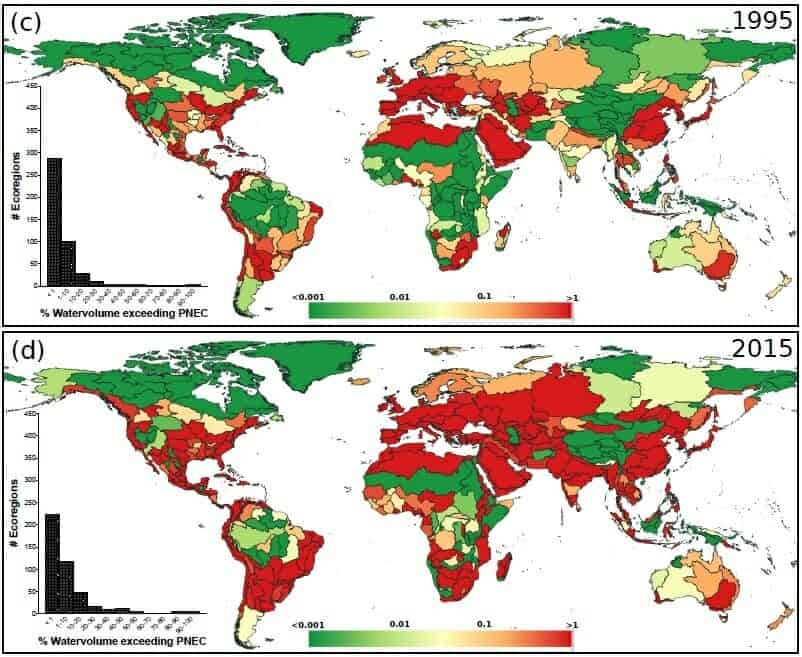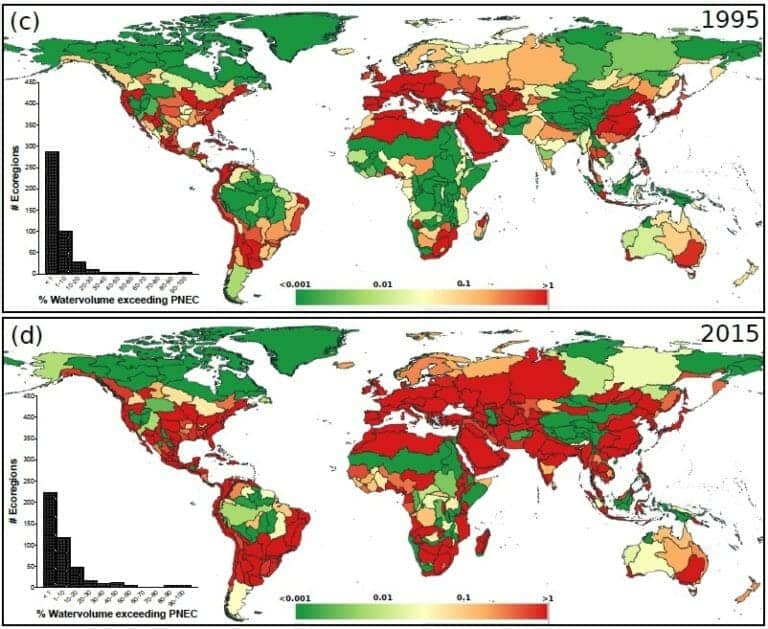The environmental risks of ciprofloxacin in fresh water have increased worldwide between 1995 and 2015. Inset: Counts of ecoregions where specific percentage of the water volume exceeds PNEC, or "predicted no effect concentrations." R. OLDENKAMP ET AL, ENVIRONMENTAL RESEARCH LETTERS
Concentrations of pharmaceuticals in rivers and lakes have significantly increased across the globe over the past 20 years, according to a new study published in the journal Environmental Research Letters. The risk of ecological damage from the residue of two pharmaceuticals, for example — carbamazepine, an anti-epileptic drug, and ciprofloxacin, an antibiotic — was 10 to 20 times higher in 2015 than in 1995, the study found.
Traces of medicines get passed into waterways through the excretion of active drugs in human waste, the disposal of unused medicine down drains, and run-off from livestock farms. The medicines can cause serious environmental harm: Chronic exposure to carbamazepine, for example, has been shown to alter feeding behavior and reduce egg viability in zebrafish, as well as reduce reproductive success in crustaceans. Antibiotics, including ciprofloxacin, can alter major nutrient cycles and decrease the effectiveness of bacteria-based wastewater management systems.
A team of scientists, led by researchers at Radboud University in The Netherlands, created a new model estimating carbamazepine […]
Full article: Concentrations of Pharmaceuticals in Freshwater Increasingly Globally
More about pharmaceuticals in our water supplies — including more about eels and other aquatic wildlife:
Fourteen Drugs Found in New York City’s Drinking Water
EPA is asked about checking illicit drug levels in Irish water
Is Our Water Supply Disrupting the Human Endocrine System?
Water Quality and Emerging Pollutants: addressing new global challenges
Human Medicine Loading River Creatures With Dozens of Drugs
Understanding chemical byproducts formed during water treatment



